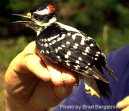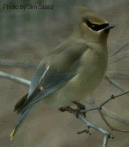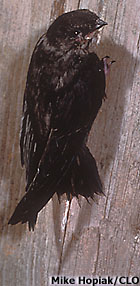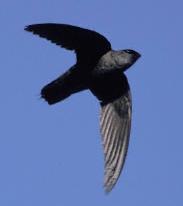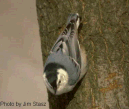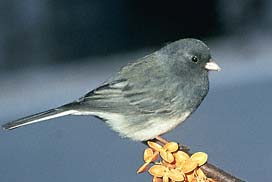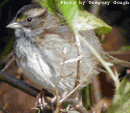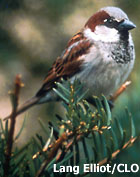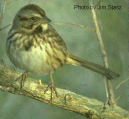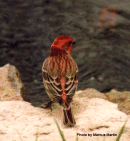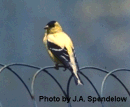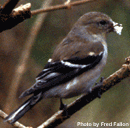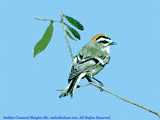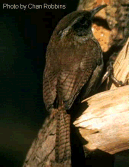
Carolina Wren Thryothorus ludovicianus (Troglodytidae)
Cool Fact-
Carolina Wrens are more ancestrally suited for southern temperatures.
Because of this harsh winters can cause a crash in this wren's population.
Carolina Wrens can raise up to three broods in one breeding season,
however and their populations have been known to rebound within a few
years.
Field Marks- This bird often perches with its tail held
in an erect position. This wren's coloring is a reddish brown above
and a light buff-brown below. The distinct white line above the eye
is another key characteristic.
Occurrence Status- Resident
